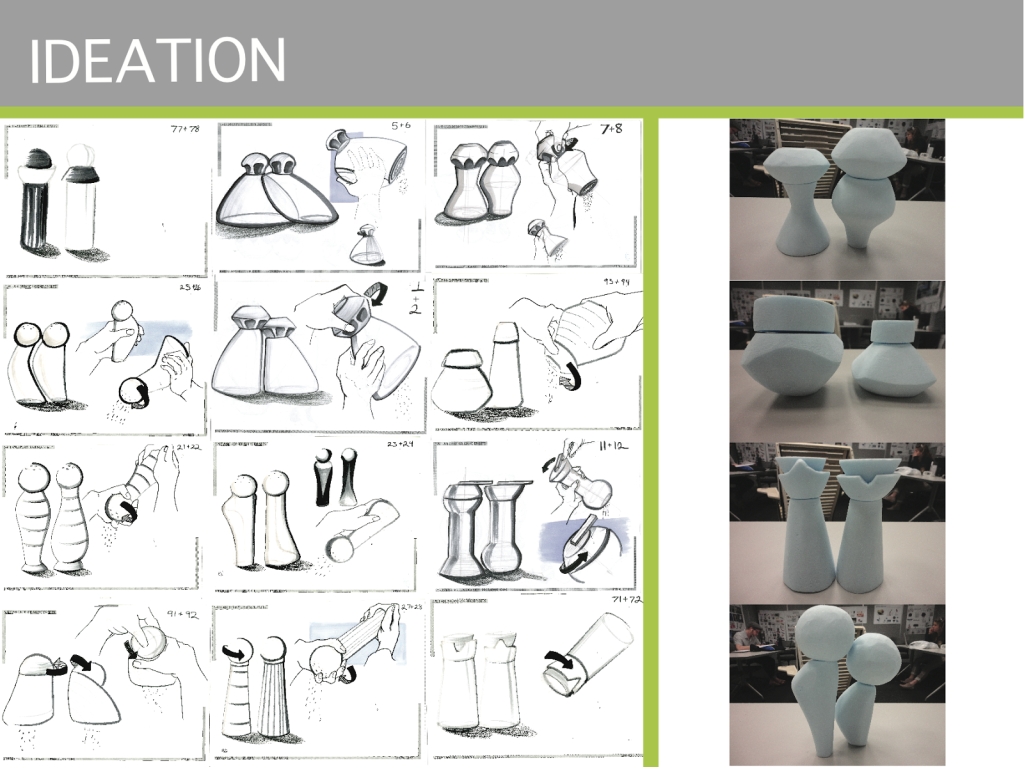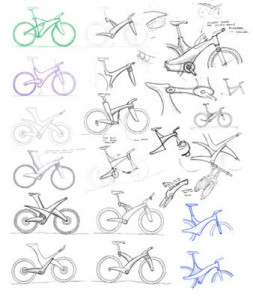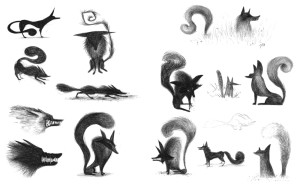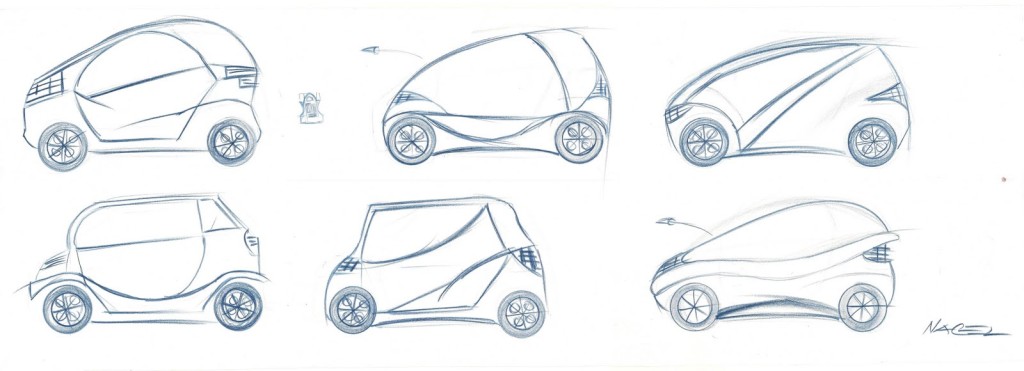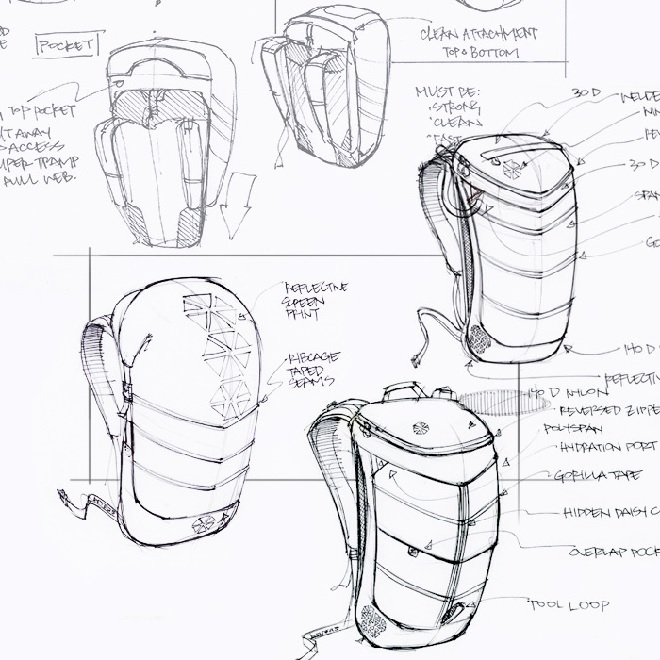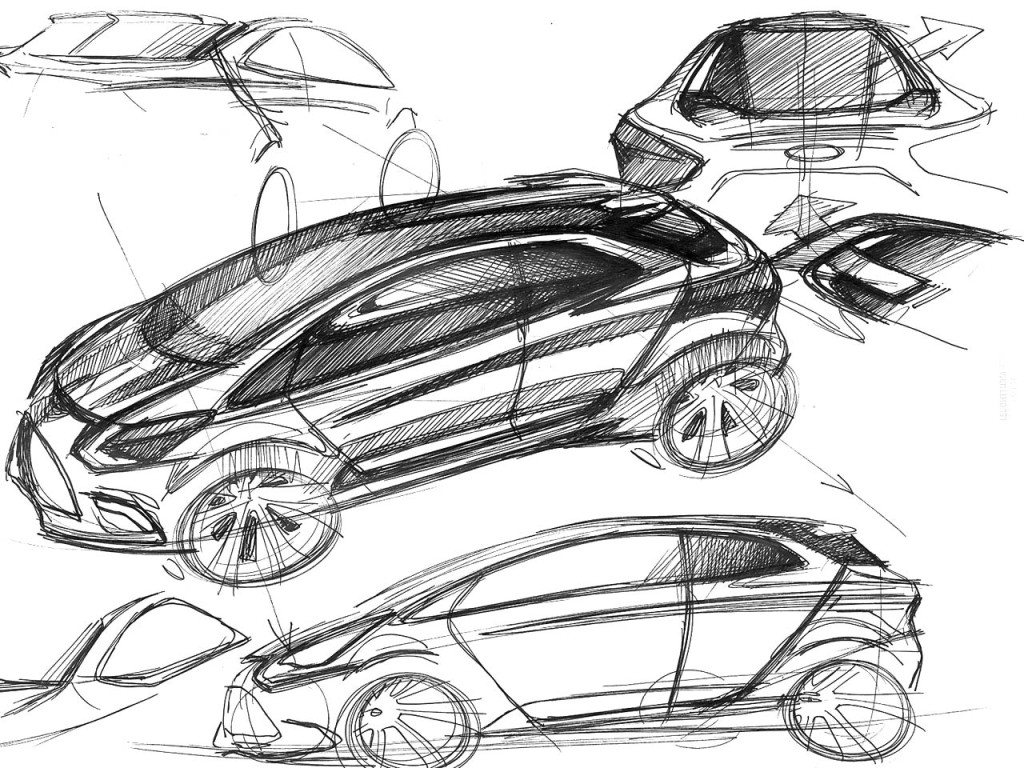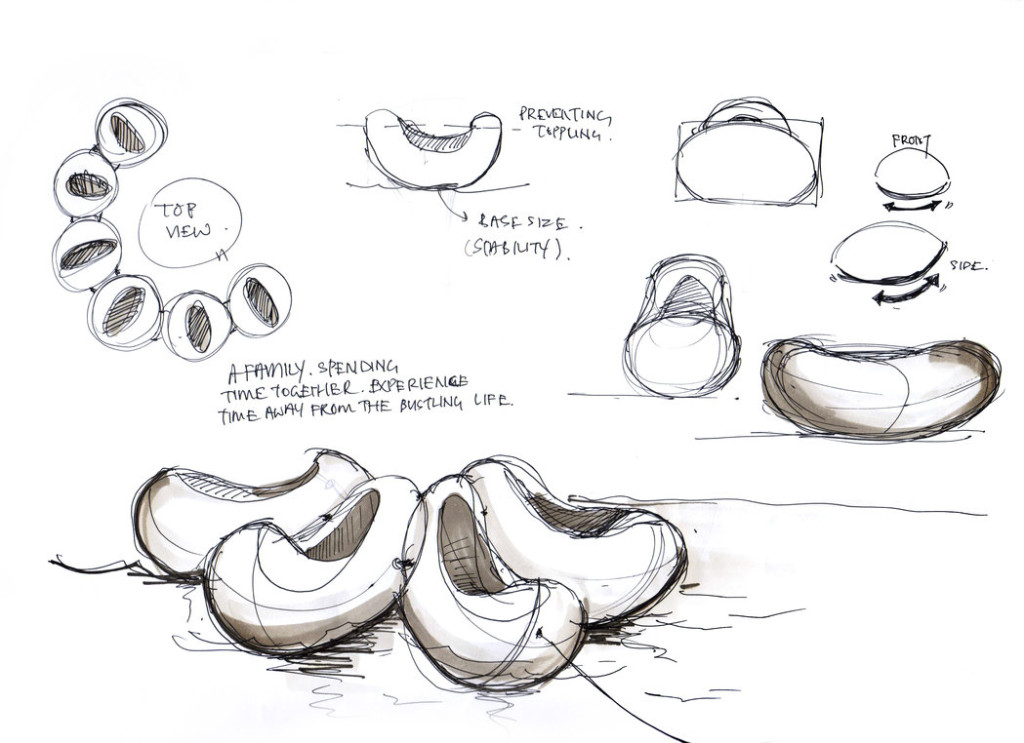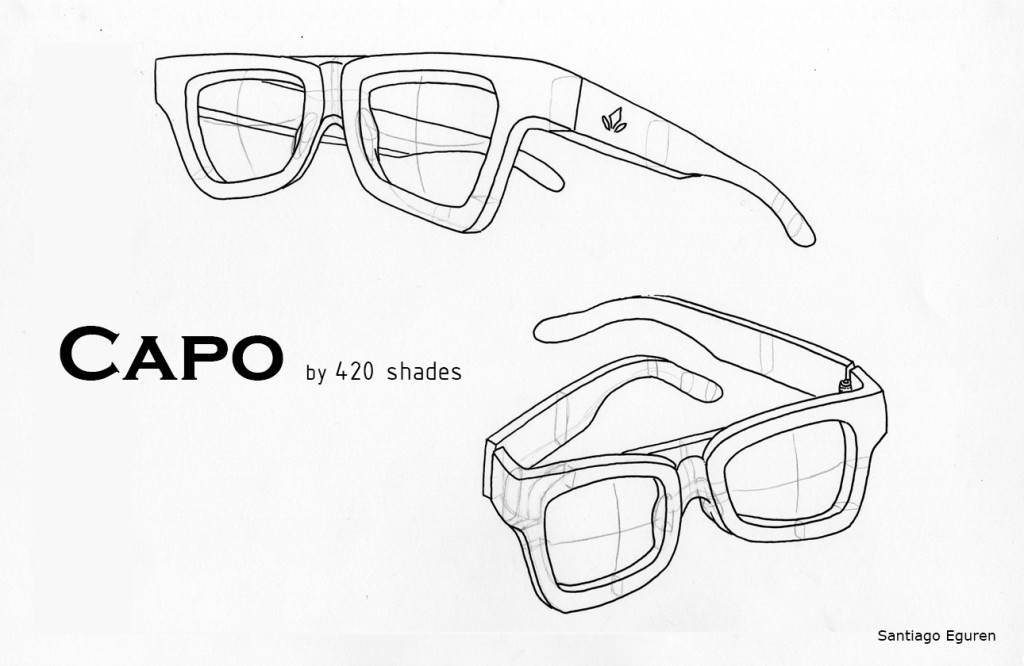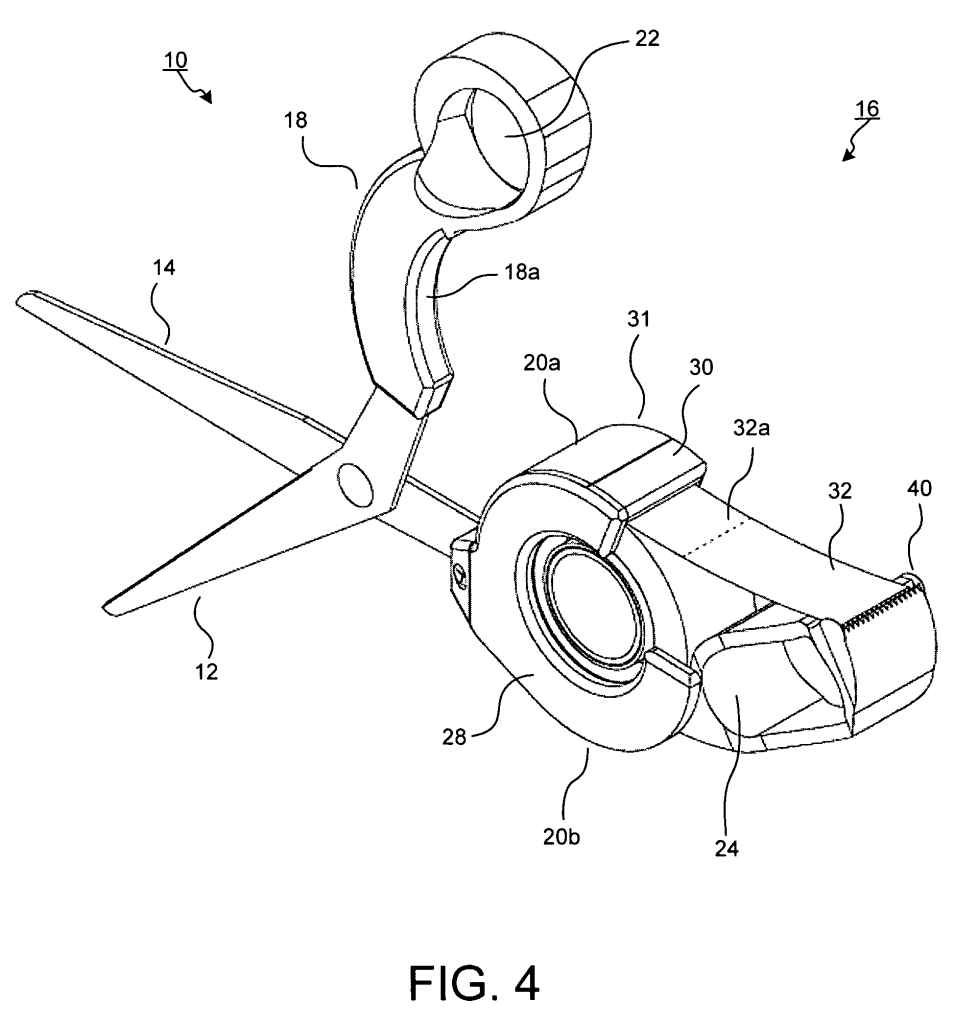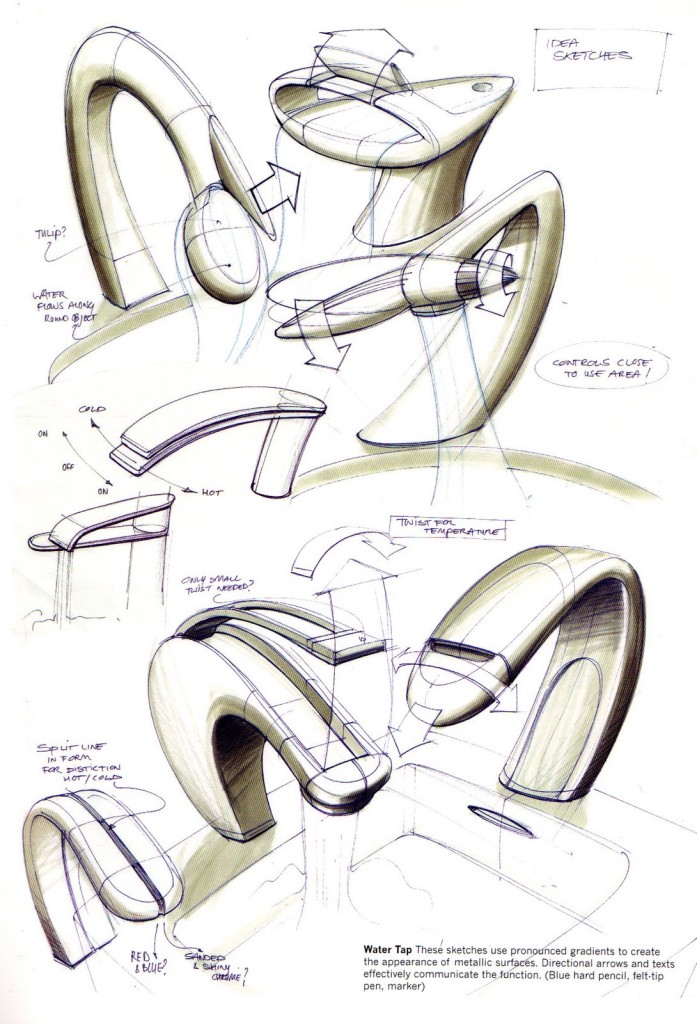Thumbnails & Roughs
Use thumbnail sketches to explore layout options. Thumbnail sketches are quick drawings, sometimes
only comprehensible to the designer. These fast pen or pencil sketches allow the designer to try out
several ideas and zero in on the most likely layouts before beginning a project. Creating thumbnail sketches
is a crucial part of the brainstorming aspect of your design work. Don’t discount the value of this step in the
design process.
Designing with Thumbnail Sketches
• Don’t fret over details. Use thumbnails to establish approximate locations for major elements. (the
examples described above may actually be “too perfect” — don’t worry about making “pretty”
pictures.)
• Try for an approximately proportional size but don’t
get out the ruler. You’re aiming for a general idea of how the piece might look.
• Make lots of thumbnail sketches. Repeat: lots of sketches. You’ll rule out many design ideas quickly
this way before wasting time in your next phase of the project.
• Don’t try doing these initial rough designs in your software. You’re apt to get caught up in things like changing the colors or doing
perfectly aligned graphics. Save that step til after you’ve done the initial brainstorming for ideas
with thumbnails.
What Others Say About Thumbnail Sketches ….
About.com Graphic Design (earlier Guide)
“These sketches only have meaning to me. I often write notes to myself so I can figure out what I meant to
do, even if I can’t figure out what the drawing means several days later.” — Judy Litt, A logo makeover
from rough sketch to finished product.
Computers Help and Hinder Design
“…designers are encouraged to do rough thumbnail sketches in pencil in the conceptual stages of a project,
based on the theory that working on the polished images that can be created on the computer actually
inhibits initial experimentation.” — If you think thumbnails are a waste of time, read this from American
City Business Journals Inc.
Creative Thinking
“Thumbnails. Repeat after me: Thumbnails. At the onset of any project, think about how it will look by
quickly scribbling out shapes into a very small space.” — Fred Showker
Thumbnail Sketches are Shorthand Notes for Artists:
Thumbnail sketches are drawing quick, abbreviated drawings. Usually, they are done very rapidly and with
no corrections – you can use any medium, though pen or pencil is the most common. Thumbnails sketches
are usually very small, often only an inch or two high.
Thumbnails are Memory Aids and Planning Tools:
Thumbnail sketches can serve as a memory aid to help you remember important features of a subject, when
making notes for a painting or drawing. They are also useful when visiting a gallery, to help you remember
important pieces. Ofen artists use thumbnail sketches to plan pictures. You can quickly experiment with
format and composition, placing just the major features – such as the horizon and any large objects, and
indicating movement and balance.
How to Draw a Thumbnail Sketch:
Imagine your subject or picture stripped of all details, through squinted eyes, or in poor light. All you see
are big rough shapes and some lines. Thats all you need for a thumbnail. First, sketch a rough box, smaller
but in the same proportions as the finished picture might be. Then sketch in the horizon line, hills, or any
major verticals or horizontals. The outline any key shapes, and quickly hatch in any strong dark areas.
There are no right or wrong ways – that’s my approach, and it might work for you. Thumbnails can be Colored:
Thumbnail sketches are a great way to plan color schemes. Use textas, colored pencil or watercolor to put
in major areas of color in your picture. Small but intense colors can also be noted, as these can attract the
eye, but don’t get bogged down with detail.
Making Notes and Working Drawings:
Once you’ve done your thumbnail sketch, you might want to make some notes alongside it. If at a gallery,
you can record the artist’s name and the title, along with your thoughts about the painting. If sketching
outdoors, you might record notes about the position of the sun, the particular colors, or make additional
sketches to show small details.
Rough Sketch
Pick your best 1 or 2 ideas and make a more complete sketch. You may also want to label areas to help explain features or materials. Designers will often show the object from different sides/perspectives.
The subject is sketched in, and potential problem areas might be done in more detail. This is where you can
fine-tune your drawing before embarking on the finished piece.
Isometric and Orthographic drawings
These are technical drawings that show the objects from different sides in a formal way.
